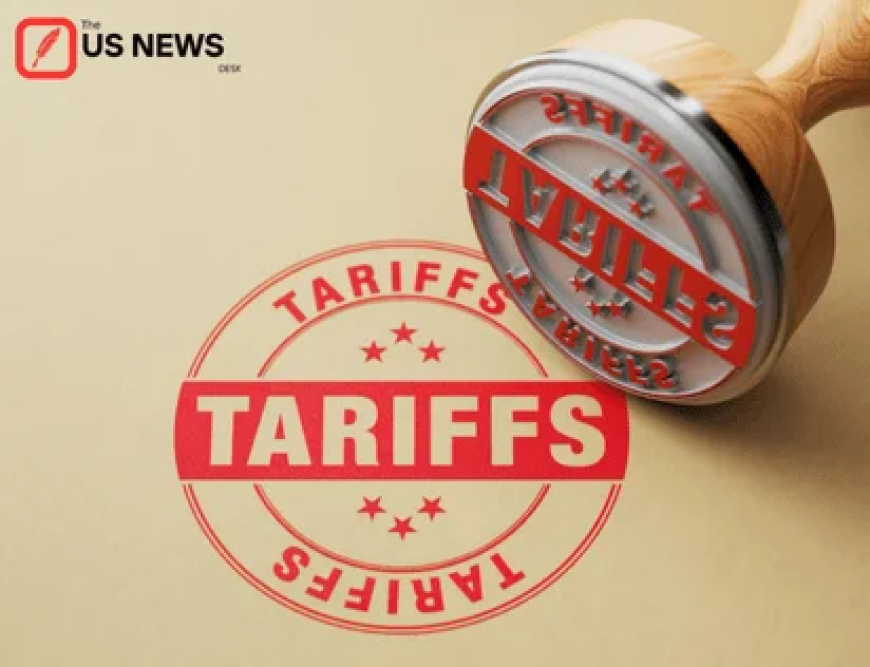From Rust to Sun: How Trump’s Tariff Policies Are Redrawing America’s Regional Economies
Trump’s tariff policies are reshaping America’s regions, causing job losses in Ohio’s manufacturing hubs while fueling gains in Texas’s energy sector. A comparative look at the Rust Belt vs. Sun Belt.

President Donald Trump’s latest round of tariffs is reshaping the American economy—but not evenly. While manufacturing towns in Ohio and Pennsylvania struggle with rising costs and layoffs, booming energy states like Texas and Florida are seeing investment gains and job growth. The divergence between the Rust Belt and Sun Belt underscores how regional economies respond differently to the same national policy.
Tariffs as a Political and Economic Tool
Trump has long framed tariffs as a way to protect American industry and punish foreign competitors, especially China. His administration has imposed new duties on imported steel, aluminum, electronics, and even select energy technologies. Supporters say these measures defend domestic producers; critics warn they distort markets and burden consumers.
Yet beyond the national headlines, the impact of these policies is being felt most sharply at the regional level.
Ohio: Manufacturing Towns on Edge
In Ohio’s Mahoning Valley—once the industrial backbone of America—manufacturers are reporting steep increases in raw material costs. Small tool-and-die shops that rely on imported steel say their margins are collapsing.
Jim Keller, who runs a third-generation machining business in Youngstown, described the challenge plainly:
“We support the idea of American strength, but when my steel costs jump 30% overnight, I can’t just pass that onto customers. We’ve already had to cut shifts.”
Local chambers of commerce estimate nearly 4,000 manufacturing jobs in the state have been lost or furloughed in the past year due to tariff-driven supply chain disruptions. State economists warn that if tariffs remain in place, Ohio could lose an additional 10,000 jobs across auto, appliances, and heavy machinery by 2026.
Texas: Energy and Exports Thriving
Contrast that with Texas, where the picture is brighter. Tariffs on imported solar panels and certain energy equipment have boosted demand for domestic suppliers. In Houston, oilfield services companies report record orders, while domestic steel mills in the Gulf region are running at full capacity to feed the state’s growing energy infrastructure.
Maria Gonzales, a refinery technician in Corpus Christi, said her company has been hiring steadily:
“We’re bringing in people every month. The tariffs mean we buy more American-made parts, and that’s creating jobs right here.”
Texas chambers of commerce report that energy-related employment is up nearly 6% since last year, with particularly strong gains in Houston and Midland. Analysts believe these increases are offsetting inflationary pressures in other sectors, creating a net-positive effect for the state’s economy.
A Tale of Two Belts
The split between the Rust Belt and the Sun Belt reveals the uneven nature of Trump’s trade strategy. In states dependent on traditional manufacturing, tariffs act as a tax on imported raw materials, raising costs for small businesses and squeezing labor markets. In contrast, regions tied to energy and resource industries benefit from reduced competition and greater demand for domestic production.
This uneven distribution of pain and gain could reshape political dynamics in upcoming elections. Ohio, Pennsylvania, and Michigan—already contested battlegrounds—may see voter backlash among laid-off workers. Meanwhile, Texas and Florida, where job growth continues, could solidify support for Trump’s economic vision.
Data-Driven Regional Comparisons
Using economic data compiled from local chambers of commerce, the disparities become clear:
-
Ohio (Rust Belt):
-
Job losses: Approx. 4,000 manufacturing jobs in 2024–25, with potential for 10,000 more by 2026.
-
Industries hardest hit: Automotive, household appliances, steel fabrication.
-
Sentiment: Frustration among small business owners who feel squeezed by rising input costs.
-
-
Texas (Sun Belt):
-
Job gains: Energy employment up 6% since 2024, creating thousands of new positions.
-
Industries benefiting: Oilfield services, domestic steel, energy infrastructure.
-
Sentiment: Optimism among workers and firms capitalizing on tariff-protected demand.
-
Economists at the Brookings Institution argue that tariff policies often produce “regional winners and losers,” depending on how dependent local economies are on imports versus exports. In this case, the contrast is especially stark.
Worker Stories: Struggles and Successes
Beyond the numbers, the human stories reflect the uneven outcomes.
-
In Cleveland, a former steelworker named Andre Williams described his layoff as “the second time in a decade my livelihood has been wiped out by forces I can’t control.”
-
In Dallas, Jessica Ramirez, who manages hiring at an oilfield logistics firm, said: “For the first time in years, I feel like there’s job security in this sector.”
These voices illustrate how a single policy can simultaneously deepen despair in one region while fueling growth in another.
The Political Fallout
The regional divides created by Trump’s tariff policies could play directly into the electoral map. Rust Belt states—already central to presidential contests—may become even more competitive if economic discontent grows. Meanwhile, Sun Belt states experiencing growth may double down on support for Trump’s trade agenda.
Experts at the Council on Foreign Relations note that trade politics have become “a domestic wedge issue as much as a foreign policy tool,” with tariffs shaping not just economics but also voter identities.
Looking Ahead
Trump’s tariffs are not temporary measures—they are part of a long-term strategy to reconfigure global trade relationships. But as the economic modeling suggests, they are also reshaping America internally, redrawing the lines of prosperity and struggle across regions.
For workers in Ohio, the challenge is survival. For workers in Texas, it is opportunity. And for the country, the question is whether such policies will unite or fracture the economic landscape of the United States.
What's Your Reaction?
 Like
0
Like
0
 Dislike
0
Dislike
0
 Love
0
Love
0
 Funny
0
Funny
0
 Angry
0
Angry
0
 Sad
0
Sad
0
 Wow
0
Wow
0



































